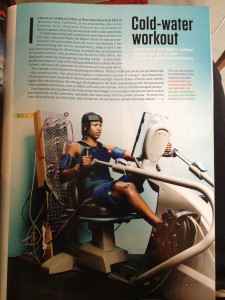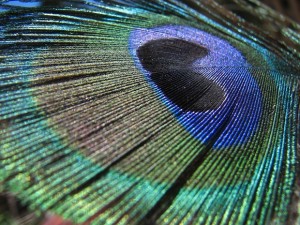Something good can actually come out of being sick and bed-bound for a few days. I was reading Wired that by accident was within reach. To my great joy I discovered an article based on two of the concepts I like: biomimicry and space technology transfer, or in other words, innovations inspired by nature and realized by spinoffs from the space program. I believe that nature is a given source to go to for new ideas and perspectives on problem solving, as well as space technologies fits into the tool-box together with Arduino along with other tools to enable the ideas become reality.
LOVE
So, the article I read was about the Vasper fitness technology, a biomimicry inspired cold-water workout using Nasa’s cooling technology, as the writer put it, a system in the new frontier of sports rehabilitation. Vasper is being developed at the Ames Research Park in Mountain View, California.
It works like this: Vasper is designed to stimulate production of natural human growth hormone (‘HGH’) – mimicking the physiology of children – by combining cooling and compression pads that hold blood in the upper arms and thighs, that fools the brain to mass-produce hormones to repair and rebuild muscle tissue. The system enables people to recover faster from injuries with less effort, as seen in the picture. Along with biomimicry, Vasper relies on cooling technology modelled on Nasa spacesuits to aid healing and performance.The article provides more in depth description.
What I like about this concept is that it stretches the biomimicry concept to not only look at nature for solutions biút also at our selves, obviously a child does not function in the same way as grownups, so there could be many discoveries to be made just by looking at how children grow and develop, for many health applications among the aging population – a huge demand pull to be expected. It is also cool to find alternative areas to utilize technologies that already have been developed for a certain purpose, a kind of recycling of knowledge and tax payers’ money. It is always interesting to hear stories like the Vasper of how they have put different pieces together to come up with something new.
HATE
Going from what I love to the other part of this assignment, to name an example of biomimicry that I hate. I find it really challenging to have this black and white approach (maybe because I’m a neutral Swede!) of pointing out one single biomimetic example that I hate and one single biomimetic example that I love, since I recognize elements of both good and bad in most of the projects I encounter. However, I can see the point of the assignment, to push for extremes, and here is the “hate” example!
To start with, I love the concept of this example and I wish it the best of luck, however, why I hate it is because of market failure (add to the list!). Why is this not the new golden standard used in every device there is?! Think about the endless possibilities and how much battery life, money and climate that could be saved. So, hereby I present, the promising but not yet successful concept of color display screen technology mimicking the way a peacock feather functions. As seen in this article by FastCo, this is one of Janine Benyus favorite exemples on biomimicry, and sure, it is super cool, but is it feasible? She mentions the company Qualcomm that has pushed it’s Mirasol technology to the market, as it was designed into some e-readers providing power saving but muted color. After some googling it states clearly that their technology has not been integrated in any successful products in the past few years, and the Achilles heel was about problems in manufacturing, however they are coming back with a new strategy, as they have been demonstrating some mockups and are looking for new licensing agreements with third party companies.
Well, the innovation process is not always linear, so let’s hope for the best in this iteration. It is easy to at first be mind blown and then fed up with all the cool concepts out there, what I am eager to learn from is tangible products that can be adapted by the masses to create real positive socio-ecological impact. As a reminder, nature has after all innovated for 2.8 billions of years, so let’s have some patience while seeking ways of transforming the society with sustainable innovations.


